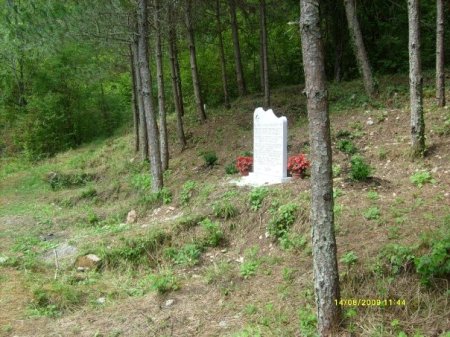Boban Šimšić, born on 17 December 1967 in Višegrad, Bosnia and Herzegovina.
The accused surrendered voluntarily on 24 January 2005 since when he is in custody. The Court of BiH took over the case on 15 June 2005. The Court confirmed the indictment on 8 July 2005.
On 11 July 2006, the first instance judgment found Boban Šimšić guilty and sentenced him to five years imprisonment. The Appellate Panel judgment on 14 August 2007 found the accused guilty and sentenced him to final sentence of 14 years imprisonment.
(Boban SImsic is on the left.)


Factual allegations in the Indictment:
The Indictment alleges that, in the period between April and July 1992 on the territory of the municipality of Višegrad, together with other members of the Serbian army and police, the accused aided and participated in the persecution of Bosniak civilians on political, national, ethnic, cultural and religious grounds.
It is alleged in the Indictment that, from May to July 1992, Boban Šimšić took part in attacks on the villages of Žlijeb, Velji Lug and Kuke in the Višegrad municipality and participated in the killings, rapes, torture and illegal detention of Bosniak civilians at the premises of the Hasan Veletovac elementary school and the Fire Brigade premises in Višegrad.
The Indictment further states that, in mid May 1992, together with a group of Serb soldiers, the accused harassed five Bosniak civilians in order to obtain information on other escaping Bosniak inhabitants. It is also alleged that, on 17 June 1992, together with other members of the Serbian army and police, the accused took part in an attack against the village of Žlijeb, whereby the Bosniak population was expelled from the village and detained at the Fire Brigade premises in Višegrad.
The indictment further alleges that, on 18 June 1992, together with a group of members of the Serbian army and police, the accused took part in an attack on the village of Kuka, whereby three village inhabitants were killed and facilities owned by Bosniaks set on fire, while the village inhabitants were taken and detained at the Hasan Veletovac elementary school in Višegrad.
Boban Šimšić is further charged with having participated in an attack on the village of Velji Lug on 25 July 1992, where it is alleged that seven Bosniak civilians were killed, several facilities owned by Bosniak set on fire and the remaining population detained at the premises of the Hasan Veletovac elementary school.
As alleged in the Indictment, in the second half of June 1992, at the Fire Brigade premises in Višegrad, together with two Serbian soldiers, the accused took part in the harassment and rapes of ten girls and women of Bosniak ethnicity, and further took part in the seizure of money and jewelry from detained civilians. The Indictment further states that, together with Milan Lukić, the accused took eighteen men of Bosniak ethnicity, who were taken to the location of Vilina Vlas, where Miloje Joksimović selected seven of them, whom the accused took to the river Drina and executed.
It is further alleged in the Indictment that Boban Šimšić was as a guard at the facility of the Hasan Veletovac elementary school during the second half of June 1992, when Bosniak civilians were detained at the school. During this time, it is alleged, the accused either on his own or together with other members of the Serbian army, police and paramilitary formations took part in the killing of at least one civilian of Bosniak ethnicity, enforced disappearance of at least eight civilians, rape of a number of girls and young women, infliction of serious injuries, and torture and seizure of money and jewelry from detained civilians.
Counts in the Indictment:
The accused Boban Šimšić is charged with the criminal offenses of Crimes against Humanity from Article 172 (1) (h) of the Criminal Code of Bosnia and Herzegovina – persecution against any group or collectivity on political, racial, national, ethnic, cultural, religious, sexual gender other grounds that are universally recognized as impermissible under international law, in conjunction with following sub-paragraphs of the same Article:
- Murder
- Forcible transfer of population
- Imprisonment
- Тorture
- Rape
- Enforced disappearance of persons
- Оther inhumane acts of a similar character intentionally causing great suffering, or serious injury to body or to physical or mental health
Course of the Proceedings:
The main trial started on 14 September 2005. On 11 July 2006, the Court rendered the first instance verdict finding the accused guilty of Crimes against humanity and sentencing him to 5 years imprisonment. On 5 January 2007, the Appellate Panel rendered a decision upholding the appeals filed by the Prosecutor’s Office of BiH and Defence and revoking the Trial Panel’s verdict. The same decision orders a retrial before the Appellate Panel. On 14 August 2007, the Appellate Panel handed down the final verdict findig the Accused guilty of Crimes against humanity and sentencing him to 14 years imprisonment.

















